Text
Honoring a Trailblazer: Dr. Harriet Rice, Class of 1887, the first African American woman to graduate from Wellesley
Cleo Hereford ’09
As presented by Hereford during the Wellesley Alumnae of African Descent Annual Meeting on Sunday, June 25, 2023.
____
During this year’s annual meeting, we wanted to highlight a true trailblazer - Dr. Harriet Rice, the first African American woman to graduate from Wellesley College. Rice was born just one year after the Civil War ended in 1866 in Newport, Rhode Island to father George, a steward for the Newport Steamship Company and mother Lucinda. A talented student, Rice achieved the highest class ranking in Greek at Newport’s racially integrated Rogers High School. After graduating in 1882, she matriculated at Wellesley a year later and was one of only three black students. One can only imagine what it was like to be a black woman at Wellesley during the 1880s but College archives do provide some insight. In 1935, the Alumnae Association sent Dr. Rice a biographical sheet asking about physical or other handicap to which she responded “Yes! I’m colored which is worse than any crime in this God blessed Christian country!”

Nevertheless, she persisted.
After receiving her degree from Wellesley in 1887, Rice, following in her brother’s footsteps, earned a medical degree from the Women’s Medical College of the New York Infirmary for Women and Children in 1891 at a time when few women pursued medicine. She then sought additional training while interning at the New England Hospital for Women and Children. Her advanced medical training is especially notable when one considers that up to 1904 only half of all medical graduates of any race or gender received postgraduate training making Dr. Rice a highly qualified physician.
As expected, given the post Reconstruction time period, black physicians faced rampant racism and discrimination often relegated to only working with black populations while female doctors, including white women, were often denied appointments at hospitals due to gender based discrimination. Rice was amongst only the second generation of black female physicians but also female physicians in general in the country. (For those interested, Rebecca Lee Crumpler was the first African American woman to become a formerly-trained physician receiving a medical degree in 1864). By 1896, there were just 115 Black female doctors in the country.
Despite this, she forged ahead determined to be a successful physician. Though largely prohibited from practicing medicine in any American hospital as an African American woman, she found a way to utilize her skills providing medical treatment and care to low income individuals at Hull House, an organization offering a variety of social services, on Chicago’s Near West Side. It was in Chicago where Rice worked alongside famous social worker, women’s suffrage leader and first American woman to receive the Nobel Peace Prize, Jane Addams. Much different than the Chicago we know today, however, only 1.3% of Chicago’s population in the 1890s was black and Rice faced discrimination, particularly from Hull House’s white European immigrant clientele (black residents were limited to residence on the South Side, far from Hull House). Further, working at the settlement house offered little in the way of financial compensation, upward mobility or recognition for Rice; at one point, she was listed as a secretary at the organization when she was in fact running the medical clinic. Rice sought other professional opportunities and, in 1897, she became the only doctor at the Chicago Maternity Hospital and Training School for Nursery Maids providing obstetric care.
After years working in the medical field in Chicago and later Boston, Dr. Rice opted to serve on the frontlines as a military physician for three years during World War I. Throughout the war, which lasted from 1914 through 1918, women of color contributed to the effort both as individuals and through organizations such as the YMCA. At the start of the war, Rice attempted to join the American Red Cross effort to provide medical services to American troops but was ultimately denied because of her race. Again, she persisted contacting the French government who leapt at the opportunity to have an experienced medical doctor available to treat French troops. Joining the effort at 49 years old, Rice served on hospital duty in France from January 1915 until just after Armistice in 1918, longer than most American troops. This period in Rice’s life finally afforded her the opportunity to both practice medicine and be recognized for her work, opportunities that had previously alluded her. As a result of American racism, she made important contributions to the Allied war effort, not under the American flag, but the French. In 1919, Rice was awarded the Medal of French Gratitude at the French Embassy in Washington, DC for outstanding service in French military hospitals treating wounded soldiers. The medal was specifically created to express gratitude by the French government to non-military participants who, in part, had performed an act of exceptional dedication in the presence of the enemy during the war. After returning home, Dr. Rice continued to work in medicine before retiring in West Somerville, MA.
Dr. Harriet Rice, Class of 1887, passed away in 1958 at age 92 in Worcester, MA and is buried in Newport, RI alongside her parents in the God’s Little Ace section of the Common Burying Ground. She is remembered as “a woman of valor.”
Sources:
Dr. Harriet Rice, Class of 1887 (Davis Museum)
A Woman of Valor
American Women Physicians in WWI
History Bytes: Dr. Harriet Alleyne Rice
Who was Harriet Rice? (Jane Addams Hull-House Museum)
Dr. Harriet Rice: First Black Resident at Hull House
7 notes
·
View notes
Text
6.24.23: One Year Post-Roe
Cleo Hereford ‘09
January 22, 1973.
In a landmark decision, the US Supreme Court ruled in Roe v. Wade that the Constitution generally protected a pregnant individual's right to have an abortion.
June 24, 2022.
Overturning that landmark ruling in Dobbs v. Jackson Women’s Health Organization, the Supreme Court held in a 6-3 decision that the Constitution did not in fact grant the right to an abortion, ending the constitutional right to abortion which had been in place for nearly 50 years.
The Response
Almost immediately, thousands took to the streets in protests and rallies across the country. President Joseph Biden put forth this statement and Vice President Kamala Harris followed with this statement while US Senator Tammy Duckworth (D-IL) noted that the decision “...paves the way for a nationwide abortion ban that Republicans have been seeking for decades." Abortion funds saw an influx of donations with the National Network of Abortion Funds raising $8 million in the five months after the Dobbs ruling. Alternatively, pro-life activists praised the decision and subsequently held a March for Life rally in Washington, DC in January 2023.
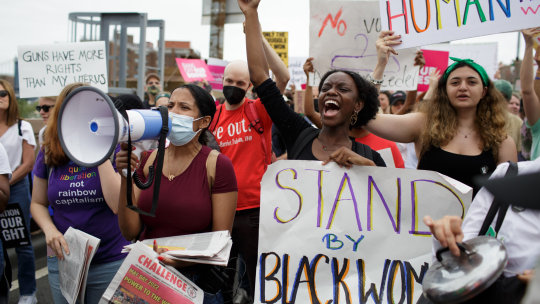
Photo Credit: New York Times

Photo Credit: POLITICO
The Aftermath
Since last June, fourteen states have passed total abortion bans including most of the Southeast. Other states have passed major restrictions like Georgia where abortion is now banned after 6 weeks.

Photo Credit: ABC News
“There is a general lack of secure and sustainable abortion and practical support funding across the country. Clinics are overworked and understaffed, and there aren’t enough hours in the day to care for patients. People are spending every dollar they have to get to clinics, and case managers are reporting that it’s more common for callers to break down crying on the phone.” (HuffPost)
What does the reproductive landscape look like today?
After Dobbs, abortion access is harder comes later and with a higher risk
A year after fall of Roe, 25 million women live in states with abortion bans or tighter restrictions
How Overturning Abortion Rights Affects Black Women
This Alabama Health Clinic Is Under Threat. It Doesn’t Provide Abortions
One year since the overturn of Roe, OB/GYNs report devastating impacts from lack of abortion access
States With Abortion Bans Are Losing a Generation of Ob-Gyns
Idaho becomes first state to restrict interstate travel for abortions
A Year Later, Doctors Feel Impact of Dobbs Decision 'Every Single Day’
How post-Roe laws are obstructing clinical care
How Florida Restricting Abortion Access Affects Black People in the South
What It's Like to Have an Abortion Denied by Dobbs
Republicans push wave of bills that would bring homicide charges for abortion
The Abortion Stories We Don’t Talk About
One year after Dobbs decision, financial pressures mount for patients and abortion-rights groups
Black Women Are Losing Access to Maternity Care. This Law Is Partly to Blame.
What happened to all that initial energy and support?
The Dobbs Decision Unleashed An Unapologetic Abortion Rights Movement
Abortion Funds Face Slowdown in Giving a Year After Supreme Court Ruling
‘Feeling of discard’: How a Tennessee abortion fund is surviving post-Dobbs
From reproductive justice activists in Tennessee:
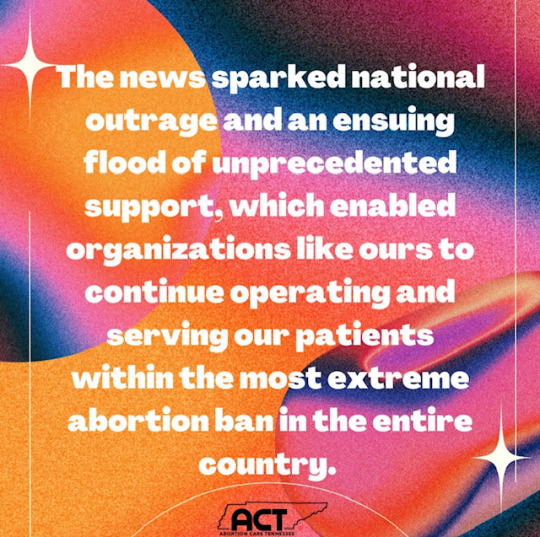
Image Credit: Abortion Care Tennessee

Image Credit: Abortion Care Tennessee
What can we do now?
Donate to abortion funds or independent clinics (Abortion Funds in the Deep South Need Help Now More Than Ever)
Buy some reproductive justice merchandise
Stay vigilant: Birth control is the next right Republicans plan to eliminate
Say abortion unapologetically
And most importantly - support reproductive access in the South and Midwest! Here are some clinics and organizations that could use your support:
West Alabama Women’s Center’ is looking to raise $50K (see its GiveButter campaign) and keep its doors open in order to continue providing reproductive as well as gender affirming care to AL and FL residents
Austin Women’s Health Center is also trying to raise $50K
Midwest Access Coalition
ARC-Southeast (AL, FL, GA, MS, SC & TN)
Alabama Women’s Clinic
Afiya Center (TX)
Indigenous Women Rising is open to all Native and Indigenous people in the US and Canada
3 notes
·
View notes
Text
Wellesley’s Inaccessibility Fails All Students, Not just Disabled Ones
Anon Wellesley ‘24
With reunion providing a space for current students to voice concerns to alums, accessibility continues to come up as an issue time and time again. As a collective letter to alums noted, Wellesley’s campus is inaccessible regardless of disability. From laundry only being accessible through narrow staircases (thank you, Claflin Hall, for the increased knee strain that provided) to consistent elevator breaks (such as an elevator in the Science Center remaining stuck in an open position on the ground floor for several days in December 2022), the physical environment is not ideal.
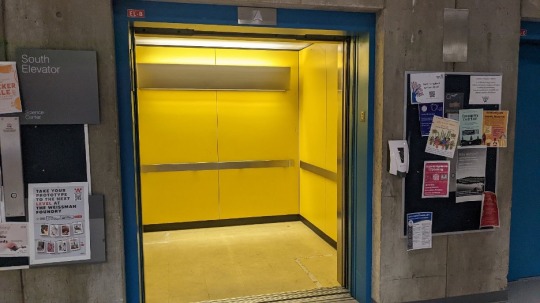
The good news is that, technically, the campus is becoming more physically accessible as buildings are updated. Through the capital projects update from Fall 2022 (accessible only through a Wellesley login), Severance Hall should become ADA-compliant after the summer, and (some of, based on the “LR only” note) Tower will be ADA-compliant in 2024. However, the update doesn’t indicate some dorms, such as Claflin, Munger, Beebe, and Shafer as becoming ADA-compliant. While, hopefully, these would mean these buildings are already compliant (although the Claflin laundry and the Quint’s tiny elevators make me doubt it), the lack of information is concerning.
In this update, they say “Extensive deferred maintenance on the Wellesley campus is a long-standing problem.” This results in massive, expensive repairs needing to be done that take buildings out of commission for extended periods of time, which could have been avoided with general maintenance when needed. When I discussed this with some faculty, though, I was told that maintenance gets deferred, in part, because of the intensive changes that would need to be made for ADA-compliance, such as Clapp’s shelves needing to be replaced so that they are at least 36 inches apart (2010 ADA 403.5.1), even though 42 inches would be better. Founders is (allegedly) also an example of this deferred maintenance, where braille can be found worn down to the point of illegibility.
Of course, ADA-compliance doesn’t technically work this way, and buildings are intended to be compliance even if no other alterations or additions are made, but there is a lot of language around allowances being made if the accessibility-oriented alterations aren’t readily achievable, which is a rather subjective definition. At least, that’s what I and some other students I know thought. Upon further research, however, the real loophole comes with the safe harbor of the 2010 ADA Standards, which lets buildings that meet the 1991 ADA Standards avoid updating their compliance … provided the safe-harbor-applicable elements haven’t been updated. With this, the College can continue being ADA-compliant without much work, as long they don’t modify the parts of the building that aren’t compliant with the 2010 standards. I haven’t the legal knowledge nor the mental capacity to read through the entirety of both the 1991 and 2010 standards for Title III to fully note which precise complaints I’ve heard would fall under this safe harbor (which is on an element-by-element basis, adding to the complications for a layperson), but this aligns what I’ve heard from faculty. A common cycle I’ve heard about is Accessibility and Disability Resources (ADR) receiving accessibility concerns and being told it’s a maintenance problem, only for maintenance to be told or tell students that it’s an ADR problem, continually giving one of the smallest offices (alongside the LGBTQ+ and sustainability offices, interestingly enough) the short end of the stick.
Even when already in place, accessibility features mean nothing when they are not consistently functional. For example, the lift in Tower West that provides access to the dining hall from the entrance near the Grey Lady was unusable for several days, first with the door broken then entirely removed.

Tower, in general, is centered around the Great Hall, which, while pretty, is blatantly inaccessible. I have spoken to RAs and students who have mentioned that student organizations would refuse to have events there due to the inaccessible entrance, directly impacting Res Life’s ability to foster community in Tower. Part of the problem with the Great Hall is the runner, which extends to the stairs on both entrances, which I was told administration didn’t want to obstruct because it was a gift to the College.
Even new(er) buildings such as the Science Center are inaccessible, from the accessible entrance on the far side near the dumpsters that requires a walk uphill either on the street or on a poorly paved path to the several occasions I was stuck on a floor of the building, forced to miss class because the elevators were broken. I remember mentioning this to a professor, who told me that it felt like a way of continually beating down students. Even when functional, Sci has an elevator problem — I remember having to wait up to 15 minutes alongside groups of up to 30 other people for an elevator on multiple occasions.
And all of this — over 700 words — is just regarding physical accessibility without any additional context. Swaths of community life has been made inaccessible for scores of students with the decreased COVID-19 guidelines, which were often framed as being due to a lack of positive cases. This framing, however, ignored the fact that they shut down one of the testing centers, leaving College Club (which is so far from the rest of campus that I had to stop going despite wanting to be tested) open three days a week, primarily during class periods; it was no wonder that testing went down, and positive cases lowered as a result despite the many students I saw who were sick and instead had to resort to the free (but expired) rapid tests the bookstore gave out or having other students source rapids, if they were the kind to care about COVID-19. These changes being reversed caught non-coronavirus concerns in the crossfire as well, such as the active prohibiting/discouragement of Zoom classes, which was highly beneficial for students that couldn’t always physically attend class.
ADR was told they were unable to give students COVID-19 accommodations, and that they could not require masks at their events because they are part of administration. This, while a notable point, is only one of many issues with the office. ADR is chronically underfunded, currently running on a single director and an administrative assistant who works for both ADR and PLTC. These two faculty members are supplemented by an array of Student Access Advocates (SAAs), who have become semi-inactive with the resignation of the former assistant director, who left after about a year. The SAAs do what they can, but a lack of funding and structural power prevents action. There’s often a feeling of both resignation and anger when it comes to ADR, a feeling that it should not be the way it is and must improve, but also that the office will never change. However, ADR can change with better transparency, funding, and staffing, alongside the willingness to actually listen to and give more power to the SAAs and to work with other students such as SAW and Active Minds.
Wellesley College is structurally flawed when it comes to accessibility in almost every area. Students should not be forced on medical leave due to normal mental health issues. Several students I know have said that the Stone Center is largely ineffective at best and harmful at worst. At least one of my classes required I enroll in Willow, a depression prevention project by the Wellesley Centers for Women, which to me was bleak. I have several disabilities, both physically and neurologically/mentally, and was told by my major advisor that Wellesley is not necessarily able to accommodate my needs as it stands currently. I know of several students who had to transfer or drop out because of their disabilities.
All of this, paired with the constantly increasing cost of attending, makes it hard to justify Wellesley. The community is often amazing, although I and many others have experienced ableism from our peers, but the administration is hard to push through. When you are not just disabled but queer and/or trans, or a person of color, or FGLI, or any combination of the above, it is increasingly more difficult to feel that you have a place at Wellesley or that you are even welcome. This is why disabled voices need to be centered and amplified, and alums need to make their voices heard. Many of us (current students) know that alums often do not get to see the state of the College, especially when the College is technically ADA compliant, but we are here, ready to talk about it to anyone who will listen to provide better circumstances to current and future students.
10 notes
·
View notes
Text
Alex Joseph ’10 (@AlexJosephATL): Why Atlanta Should #StopCopCity
Written by Alex Joseph ‘10
I never imagined my first foray into local politics would start like it did: I got into a fight on Twitter with a local elected official. My city council member had just tweeted a strongly-worded statement denouncing a controversial $90 million police and fire department training center being planned in Atlanta, Georgia known as “Cop City.” In that same statement, however, they also said that despite their opposition to the project, the city council did not have the power to cancel the city’s lease agreement and to stop the construction of Cop City. As a lawyer who represents cities and counties and a person who has rented several apartments (and broken several leases), I just didn’t believe their statement that nothing could be done.
I then spent the weekend digging into the publicly available lease and what I found surprised me. In short, the lease has a provision (Sec. 4.3) that allows the mayor to terminate the lease at any time with or without cause with the requirement of giving the lessee (in this case, the Atlanta Police Foundation) 180 days written notice. And after further research, I uncovered that the city council can also adopt a resolution at any time to cancel the lease! To summarize these findings, I wrote this legal memorandum and shared it with the public, via Twitter of course. My hope is that members of the public will use the information and legal arguments contained in my memorandum to have constructive, fact-based conversations with our elected officials and ultimately persuade them to cancel the lease between the city and the Atlanta Police Foundation.
The lease should be canceled for many reasons. First, the proposed site location is within the Weelaunee Forest, which is Atlanta’s largest remaining green space and one of the city’s greatest defenses against worsening climate change. The forest was originally inhabited by the Muscogee (Creek) Tribe before their forced removal in the early 19th century. The area then became part of a complex of farms that included a slave plantation and was purchased by the City of Atlanta in 1911. The city would operate the land as a prison farm until the mid-1990s.
The $90 million conceptualized Cop City facility will include a mock city, a “burn building” for firefighters to practice, a firing range, a driving course, stables and pastureland for police horses and kennels for K-9 units, along with training classrooms. The design designates 85 acres of the proposed site location to be turned into the training facility while the other 265 are slated to be preserved as greenspace. The scale of the project is truly unprecedented. For comparison, the NYPD’s training academy is a roughly 32-acre campus and the LAPD training campus is about 20 acres. The proposed site location is also in an area largely made up of Black residents — one of the groups most at risk of over-policing.

But perhaps the most important reason the lease should be canceled is because Atlantans are, for the most part, vehemently against the construction of Cop City. When the proposal first emerged on the city council meeting docket for consideration, there were 1,166 comments from the public, totalling 17 hours, the majority of which were in opposition to the project. This has been the driving force behind my research and involvement because no matter where one stands on the issues surrounding Cop City, I think we all agree our elected officials should listen to the voices of their constituents. Today, protests continue against the project and while construction is slated to begin in August, there is energy in the community around holding councilmembers accountable for acknowledging the feasibility of canceling the lease. I’m glad that in a small way, my legal research has helped amplify these voices loud enough for decision makers to listen.
_________
Alex Joseph graduated from Wellesley with a degree in history and later obtained a JD from the University of Georgia School of Law. Her previous experience includes serving as an Assistant District Attorney in South Carolina and as an Assistant United States Attorney in the Northern District of Georgia.
16 notes
·
View notes
Text
Earth Day Spotlight: Courtney Streett ‘09, Native Roots Farm Foundation
Interview by Cleo Hereford ‘09
A Delaware native and member of the Nanticoke tribe, Courtney Streett ‘09 is currently the President and Executive Director of the Native Roots Farm Foundation (NRFF). NRFF is a non-profit organization “dedicated to celebrating Native American cultures, protecting open space, cultivating a public garden, and practicing sustainable agriculture.” Prior to founding NRFF, Courtney was previously an associate producer at CBS News working on both the CBS Evening News and 60 Minutes and was also a senior news producer for the Business Insider.
I was super excited to catch up with my friend and classmate about her exciting new work with the NRFF.
Cleo: Thanks for chatting with me, Courtney! Before we talk specifically about the Native Roots Farm Foundation, you say NRFF’s story starts with your great-grandparents. Tell us a little bit about them and also your family’s Delaware roots.
Courtney: Thanks, Cleo, for inviting me to share my journey with the Wellesley Underground community!
My family has been in Delaware…since time immemorial. Through my father, I’m a member of the Nanticoke Indian Association and our family tree goes back several hundred years in lower Delaware (since European records were taken). The Nanticokes’ first contact with Europeans was in 1608 with Captain John Smith, yup, the man who kidnapped Pocahontas. The community has survived since then by assimilating into the mainstream, but many aspects of our culture were lost. That includes our relationships with food and nature – rather than seasonally moving between fishing, hunting/foraging, and growing regionally adapted crops, the Nanticoke had to adjust to the European practices of private land ownership and farming in one place year round.
At the turn of the 20th century, my Nanticoke great-grandparents bought a farm. It was unusual for people of color to own property at that time, but they cultivated the land and sold produce like strawberries, raspberries, peas, and tomatoes to passersby at the beach. Through hard work, dedication, and tenacity that property passed down through generations of my family and is now owned by my father’s cousins. I grew up visiting the farm and it’s provided a connection to both the natural world and to my ancestors.
Cleo: Native American communities, like all minoritized communities, are not monolithic. What would you like WU readers to know about the Nanticoke, the tribe that your great-grandparents were members of?
Courtney: We can thank Hollywood for creating the stereotype that all Native American communities live on reservations, have long straight hair, have tepees, and operate casinos.
Indigenous communities have been largely erased from American history – today Pennsylvania doesn’t even recognize any tribal communities. But we know the Lenape, Susquehanna, and Iroquois were some of the area’s first inhabitants.
We are still here! The Nanticoke have a Powwow every September that’s open to the public. Mark your calendar: September 10 and 11, 2022! It’s a celebration of our culture and community and an affirmation of our roots in Delaware.

Cleo: Let’s talk about NRFF. You previously worked as a producer for CBS News and the Business Insider. What made you take the leap into establishing a non-profit organization? Why focus on a public garden and farm?
Courtney: I was living in Brooklyn and working my dream job; and then my dream changed.
After Powwow in 2018, I saw that the farm my great-grandparents had nurtured was for sale. I knew this cultural and agricultural history couldn’t be lost – and I also knew that my partner and I couldn’t afford to buy 100 acres, 10 minutes from the beach.
I had nightmares about the farm disappearing. Because in this area, the crops have been replaced by condos. Lower Delaware has been one of the fastest developing regions of the country. After months of conversations and research, we realized our limitations as individuals, but that as a collective, we could make a difference. So, we created Native Roots Farm Foundation (NRFF).
Why plants? When creating NRFF, we wanted to celebrate Indigenous communities, the farm’s agricultural history, and also native plants. So, NRFF has a few different components to its mission. We’re working to celebrate local Indigneous communities by protecting open space, creating a public garden with native plants and highlighting what they’re called by the Nanticoke and Lenape, and cultivating a farm that feeds the community using Indigenous agricultural techniques.
I also love plants and getting my hands in the soil – I did research in the Wellesley’s Greenhouses my junior year and presented at the Ruhlman Conference. I didn’t know how that would manifest in my life, but it was a building block for NRFF. Sibs, while on campus (as students or alums) check out the new greenhouse, explore the edible ecosystem, and walk one of the many beautiful trails! You never know how it’ll change your life!
Cleo: Building an organization in the best of times is not easy. How has it been attempting to establish and grow NRFF during the ongoing (never ending) pandemic?
Courtney: Hahaha what an interesting question. We launched NRFF in January 2020…and the rest is history. Lockdown meant we had the time to sit on the computer, file paperwork, and really build a strong foundation for NRFF.
It also meant that events we had planned couldn’t happen. So, we pivoted and started building an online community which has continued to grow and flourish during this never ending pandemic. Every week, we post on social media about native plants, food systems, and Indigenous communities.
(Shameless plug—follow us on Instagram and Facebook!)
Cleo: In addition to protecting land at risk of development, how does climate change factor into your goals for establishing NRFF?
Courtney: Right now, the buzz words in food production are “regenerative agriculture”. Regenerative agriculture is *Indigenous Agriculture*. But, of course, the Indigenous roots of this land stewardship practice are rarely recognized. Instead, regenerative agriculture is celebrated as a brand new way to farm.
Why are we hearing about this now? Most food is grown using industrial agricultural practices that have been linked to pollution, soil erosion, intensive water use, reduced biodiversity, chronic illness, and greenhouse gas emissions which are causing climate change.
Regenerative agriculture differs because it’s a holistic approach to land management. It recognizes the interconnectedness of soil, plants, water, animals, and people without centering humans. In practice, regenerative agriculture focuses on nurturing soil health, because that determines the health of both people and the planet.
Most importantly, regenerative agriculture is about community and equity – principles and approaches NRFF celebrates. Let’s get back to the roots and work with nature to address climate change.
Cleo: In addition to posting about sustainable farming and plant life, you have also posted about rejecting blood quantum and have highlighted those with both Black and Native ancestry on the Native Roots IG page. As someone who is both Black and Native, why has it been important for you to post about those topics?
Courtney: My mother’s parents were from the Caribbean and I always saw my two cultures, Indigenous and Caribbean, as being separate. With mom you eat flying fish and callaloo. With dad you eat fry bread and succotash.
But then I heard a song that stopped me. It was “Ba Na Na” a blend of Caribbean beats and Native drumming (by the Indiegnous group The Halluci Nation). The lyrics are: “...Carnival season, this life for the books / I jump and I wave and I wine and I juke…” Just like this song mixes genres, I can and other people can, too. It’s time for all of us to embrace our full cultures and identities.
Cleo: What are your long and short-term plans for NRFF? Where do you see the organization in 5 years?
Courtney: In five years, I see NRFF welcoming the Wellesley family to its fully operational public garden and sustainable farm!
More immediately, we have our first big event of 2022 next weekend and I’m looking forward to continuing to build community, making Tehim Juice which has become an NRFF staple (Tehim is Nanticoke for strawberry), and meeting new people! We’re also hoping to have an intern this summer and just submitted a Hive Internship Project.
Cleo: Finally, how can your Wellesley sibs and WU readers support you and your organization?
We’re still a new organization, in the startup phase, and I’m so grateful for the support of the Wellesley family!
You can help uplift NRFF’s message by following us on social media, sharing the organization with your community, grabbing our signature shirt that says “This shirt saves farms”, or making a donation.
But don’t stop with NRFF, get to know your native plants! Plant them in your yard, window box, or planter. Learn what they’re called in the Indigenous language where you live. And foster a love for your local ecology.
____
For more information on NRFF or to support the organization: https://www.nativerootsde.org
You can also follow NRFF on Instagram @nativeroots_de
19 notes
·
View notes
Text
Guest Post: Why you Should Care about Taxes - Eshika Kaul ‘23
There are few words that elicit a similar level of dread in average people as taxes do. Simply mentioning the word results in immediate not-so-subtle groans and sighs. This reaction is justified: even beyond the stress of simply completing taxes, the tax system, like many institutions, has a history of racial prejudice. As Professor Dorothy Brown documents in her book The Whiteness of Wealth, the incorporation of new tax benefits and credits like lower taxation on stock income or marriage tax incentives throughout the years has been aimed at lowering the contributions of whiteAmericans.
Nevertheless, there are many tools within the tax code that you can leverage to support yourself or others. Unfortunately, these resources are often not fully taken advantage of due to the overly complex language and confusing rules of the tax code. Adding onto this, some taxpayers, particularly those who are low-income or are non-English speakers, are manipulated by fraudulent tax filers who steal the refunds they deserve. Regardless of whether you hope to use the tax code to support your justice initiatives, make sure your family has the right resources, or file your own taxes, it is important to learn more about taxes.
The tax system is unique in that it has an individual’s financial and familial circumstances and because of this, it has been and can be used to provide support to historically disadvantaged groups. Some salient programs that have had national benefits include three refundable tax credits: the Earned Income Tax Credit, the American Opportunity Credit, and the Child Tax Credit. Refundable tax credits differ from nonrefundable tax credits in that they can return extra money to you, boosting your tax refund. If a refundable credit or a partially refundable credit reduces your tax liability to zero, the government will give you an amount of the unused refundable portion of the credit as a tax refund. Thus, while nonrefundable tax credit can reduce your liabilities (the amount you owe the government) to zero, refundable tax credits go beyond this, with the possibility of the government paying you a certain amount of eligible money. These refundable credits are particularly important to low income taxpayers because they generally need to pay the government a lower amount of money, making them often unable to benefit from all of the resources provided by the credit if it is non-refundable.
The first refundable credit, the Earned Income Tax Credit, which provides workers with a refund of a certain percentage of their earnings, has been the most effective anti-poverty program for working age people. The American Opportunity Credit, a partially refundable tax credit that can give students a credit of up to $2,500 for qualifying higher educational expenses, has been able to offset the costs of college. The Child Tax Credit offers financial assistance to low-income families with children and has proven to decrease child poverty and increase social mobility for many families. During the pandemic, President Biden used the tax code as an engine to alleviate some monetary burden for low-income families. His monumental expansion of the Child Tax Credit lifted 3.7 million children out of poverty in December and cut child poverty rates by around 30 percent. When filing taxes, learn whether your community, family, or yourself can qualify for these programs because they have been a positive force across the country.
While the tax code has been used in historic ways during the past couple of years to uplift many Americans, these changes are not permanent and action needs to be taken to support them.
The Build Back Better Act, which incorporated many of the social tax expansions like the Advanced Child Tax Credit changes, is currently being revised and repacked into different proposals and policies. With the future of these crucial programs on the line, it is more important now than ever to reach out to your senator advocating for passing this bill. But there is advocacy that can be done beyond speaking to elected officials. You can pass a short certificate online on the IRS website to learn about preparing returns and more generally about the tax code. Then, you can file taxes for yourself, your family or others at a Volunteer Income Tax Assistance (VITA) site. With the tax deadline quickly approaching on April 18th (or April 19th for MA and ME), it is necessary to maximize the potential of the tax code, both by pushing for new reforms and helping everyday Americans access them.
Most importantly, remember that behind the verbose language and excessive rules are learnable tools that you can use to support yourself and those around you.
______________
Eshika Kaul ‘23 is an Economics and Peace & Justice Studies student at the College. Her passion for public service has led her to expand volunteering opportunities for students and lead a $5,000 week-long civic-oriented trip as a Ministrare Coordinator. Off-campus, Eshika has personally leveraged her tax certification to secure tens of thousands of dollars in benefits for under-resourced clients at the Federal Tax Clinic of Harvard Legal Services Center.
Please reach out to me at [email protected] if you are interested in learning more about taxes or getting involved with volunteering.
Disclaimer: A version of this article has appeared in The Wellesley News.
4 notes
·
View notes
Text
Supporting Abortion Funds in the South
Since we last posted about Texas’ abortion ban (SB8), there have been a number of abortion restriction related bills passed. Just this week both Florida and Kentucky passing bills with the latter banning abortions after 15 weeks effective July 1, 2022. Now more than ever, it’s important to local abortion funds in states imposing restrictions on reproductive rights, particularly given that these bans often cause the most harm for those who are low income and/or POC.
If you have the means, we’ve put together a list of some funds for you to support:
Alabama
Yellowhammer Fund
Alabama Cohosh Collaborative
Florida
Broward Women’s Emergency Fund
Tampa Bay Abortion Fund
Florida Access Network
Women’s Emergency Network
Kentucky
Kentucky Health Justice Network
A Fund, Inc
Oklahoma
Roe Fund
Texas
Frontera Fund
Jane’s Due Process
Texas Equal Access Fund
Lilith Fund
West Fund
Multi-State
Indigenous Women Rising
ARC Southeast (Alabama, Florida, Georgia, Mississippi, South Carolina & Tennessee)
7K notes
·
View notes
Text
Interview with Stephanie Waslohn '08 on Pandemic Sewing and Fat Liberation

Stephanie Waslohn is a professional archivist and amateur everything else. She lives in her hometown in Northern California with her small dog familiar.
Shelly Anand, WU Founder: The last two years have been trying to say the least. Overall, how has the pandemic gone for you?
Stephanie Waslohn: I've been both really lucky and fairly lonely. I felt so lost in space living alone and suddenly working from home in the early pandemic that I decided to think about my isolation like an astronaut focused on my mission. That mission has changed over the last two years, but the metaphor has let me redefine what's necessary for my survival.

Shelly: One of the highlights of the pandemic for me has been watching your garment sewing journey on Instagram (IG handle @lemonseltzer). What made you start (or re-start) garment sewing?
Stephanie: Honestly? Panic.
I'd like to say it was sustainability, or out of pure desire for the kind of clothes I couldn't buy as a fat person, but the truth is I planned my first sewing capsule during wildfires in my hometown-- one tab open on a fire map, the others sewing patterns and fabric stores. I was taught to sew as a kid; I had my mom's old machine and my rusty skills in a vast ocean of time and uncertainty. My personal motto is "do what you can and let go of the rest." Planning sewing projects was something I could do at that moment.
I will say I wouldn't have latched onto it without the work of Muna and Broad, an indie sewing pattern company who specialize in plus sizes. Knowing that they designed for larger bodies meant I could mentally skip the fear of needing to adjust a pattern drastically.
Shelly: You also talk about how painstaking the process can be, how you have learned so many new methods of sewing, and how it has been a lesson in patience. What are some key takeaways?
Stephanie: Cribbing from Octavia Butler: happiness is steady progress towards a worthy goal. Sewing is a physical manifestation of that personal truth for me. (Hobbies, dude, they rock.)
Also! Social media is whatever, but finding a community of fat makers and designers through it has been rewarding. My greatest inspiration is other fat people living their sartorial truth. I teach myself skills piecemeal project by project, but the thoughtful work of being part of a community based in mutual inspiration is what keeps me coming back.

Shelly: I absolutely love how you are expressing self love and body positivity through bespoke clothing. How has this process been for you with respect to loving yourself and loving your body?
Stephanie: Body acceptance is both at the center of this work, and an after-thought. From a pragmatic point of view, the size range is the first thing I check when I look at a sewing pattern. Loving my body won't magically extend a limited size range to fit my hips. By the same token, loving myself won't teach me how to adjust a pattern for my body, but it sure as shit makes doing it a lot easier in application.
The revolutionary part for me is the freedom of aesthetic self-expression-- for most of my life my main criteria for clothing was "does it fit?" rather than "do i like it?" A (literal) bind made all the more fun house mirror-esque by the plus size industry that historically offers a pretty warped version of what fat consumers want. It's really rewarding to define for myself the intersection of comfort and self-expression with less external pressure, while knowing I'm partially opting out of yet another system built on the exploitation of women’s labor.
Shelly: How does it feel having been made to measure clothing in a world that doesn’t cater to fat bodies.
Stephanie: Shitty. Even in sewing, the big four pattern companies have atrocious sizing, and many indie pattern companies choose to only offer a limited size range. I have the personal rule not to buy a pattern (or a garment) where I wear the largest size.
But clothing is the tip of the iceberg in a world that rejects fat bodies-- anti-fatness creates systemic barriers to health care at the most life threatening, limiting travel, where we can eat in restaurants and what personal services we can receive, who will hire us/how much we're paid, access to hobbies that require specialized gear, all the way down to mundane risk like the weight limit of my household step stool. There is no sphere of my life untouched by my body type. And I say this as a privileged fat person-- I'm a white, cis, and often perceived as "not that fat.” (As an aside, that's like... a quote from my Wellesley undergrad. After standing up against a fatphobic statement about another student, I was informed I was the appropriate, proportional kind of fat like I should be flattered. The 2000's were wild, man.)
Shelly: You actually helped me review and edit the manuscript of my upcoming picture book I Love My Body Because, co-authored by Nomi Ellenson (sister of my W bestie Hannah Ellenson '08), a picture book I hope will teach kids about body positivity, body acceptance, that someone being fat isn’t bad or negative, that its beautiful, that all bodies are good and capable of so many things. What are your thoughts on the body positivity movement? On the movement to fight fatphobia? How far are we from where we need to be?
Stephanie: The body positivity movement at its core, and its best, is based on the work of fat liberationists. The deeply personal internal shifts of meeting our bodies where they are can be both personally rewarding and serve as a gateway to building a more equitable future.
The way I see it, I'm fat like my eyes are brown. They are both two equal truths about my body. If eye color was as likely to determine the quality of my medical care as my body size, that's how far we are from where we need to be.
Not to say that my little brother didn't tease me that my "brown eyes look like poo" but it's a funny reminder of the scales of impact. I love the idea that your book is for the next generation of kids finding more body equity and self acceptance.
Shelly: Which pieces have been your favorite so far?
Stephanie: I really love my Cobden Chore coat. It's a perfect California three season coat, and was my first top stitching. A professional sewist asked me the same question recently and I pointed to the coat I'd worn in, only to see her politely laugh and announce that she loved that I left in my jacked up top stitching. I'm an imperfect maker and loving it anyway is like blowing a kiss to a perfectionist past me stalled by disliking being bad at a new skill long enough to get good.
Sometimes the materials guide me to the final garment-- for example this gorgeous Japanese import linen was planned for another garment. Now it's a beautiful yet comfortable dress that feels like I'm wearing a piece of art.

Shelly: You’ve taken on other interesting projects that you’ve shared with your followers on instagram including your renovating an RV. WHAT WAS THAT LIKE?
Stephanie: My pandemic freak out! I went full snail self-protection. I could unpack why I made the choice, but the main gist is it allowed me to feel in control in a world and a time when that is rare. I’m deeply privileged that my brother lets me park it on his rural acreage in our hometown, the same place I was watching so closely on the map and where his home was saved from the fires. It’s at the top of a hill with some privacy and outdoor space that offers the scenic background to my sewing photography.
Minus cursing the heavens when I bonk my head on a low bedroom beam, the trade of living small’s physical restrictions is worth the freedom of outdoor space and knowing I can weather whatever comes. I don't talk about personal finance much as part of my social media presence, but the tiny living does help my craft budget.
Shelly: You have also had some interesting encounters with deer over the pandemic. Care to share?
Stephanie: I'm a very niche disney princess! The combination of a high deer population, California drought, and my rural cottage core raised bed garden fantasies mean we're good judies. A pair of fawns started hanging around the property sleeping under a trailer after their mother was hit by a car. Besides my resident deer, there's a herd of wild turkeys, hares, quails, and so many types of birds. I even walked upon a coyote stalking prey once!
Shelly: For our readers who have dreams of taking on projects, re-visiting skills or learning new ones, any advice?
Stephanie: Anything worth doing is worth doing poorly. Seriously.
#stephanie waslohn#fatsewing#fatsewist#wellesley college#instagram#class of 2008#body positivity#fat liberation
3 notes
·
View notes
Text

What was the best part of the year? It was awful, we know. But anything good?
0 notes
Text
Supporting Native Organizations on Indigenous Peoples’ Day
It’s Indigenous Peoples’ Day (#f*ckColumbus) - what better way to commemorate the day and show solidarity than to support Native organizations and social media accounts. I’ve put together the following list to help get you started:
Native Roots Farm Foundation (https://www.nativerootsde.org/): A non-profit organization dedicated to “celebrating Native American cultures, protecting open space, cultivating a public garden, and practicing sustainable” founded by fellow alum Courtney Streett ‘09
SLC Air Protectors (@SLCAir): Native-led 501c3 that addresses the air pollution in Utah, while supporting Indigenous stewardship; Venmo: SLC-AirProtectors
Indigenous Peoples Day NYC (https://ipdnyc.org/): A 24 hour celebration of dance, culture, and ceremony on Lanapehoking/Randall’s Island, NYC
Lakota People's Law Project (IG: @lakotalaw)
Honor the Earth (https://www.honorearth.org/)
Indigenous Food Lab (IG: @indigenousfoodlab): An org focused on creating access to Indigenous education & foods
Tewa Women United (https://tewawomenunited.org/): Located in the Tewa homelands, the org works to grow community and end violence against women, girls, and the earth
Indigenous Women Rising (https://www.iwrising.org/): An org focused on sexual health and reproductive justice accessibility for Native families
Native American Rights Fund (https://www.narf.org/): “Since 1970, the Native American Rights Fund (NARF) has provided legal assistance to Indian tribes, organizations, and individuals nationwide who might otherwise have gone without adequate representation.”
Indian Law Resource Center (https://indianlaw.org/)
Land Rights Now (https://www.landrightsnow.org/): An org that mobilizes and engages active citizens, media, communities and organizations worldwide to promote and secure the land rights of Indigenous Peoples and local communities.
American Indian College Fund (https://collegefund.org/)
Indigenous Environmental Network (https://www.ienearth.org/)
Coalition to Stop Violence Against Native Women (IG: @csvanw; https://www.csvanw.org/)
Missing and Murdered Indigenous Women USA (https://mmiwusa.org/)
Partnership with Native Americans (http://www.nativepartnership.org/site/PageServer?pagename=pwna_home): A 501 (c)(3) nonprofit organization “committed to championing hope for a brighter future for Native Americans living on remote, isolated and impoverished reservations.”
Native American Heritage Association (https://www.naha-inc.org/): NAHA is a charitable non-profit organization dedicated to “helping Native American families in need living on Reservations in South Dakota and Wyoming”
Inuit Tapirit Kanatami (https://www.itk.ca/help-inuit-communities-thrive/): Works to improve the health and wellbeing of Inuit in Canada “through research, advocacy, public outreach and education.”
Native Wellness Institute (https://www.nativewellness.com/)
Warrior Women Project (https://www.warriorwomen.org/)
The Redhawk Native American Art Council (https://www.redhawkcouncil.org/): A not for profit organization “founded and maintained by Native American artists and educators serving the tristate [New York] area.”
Indigenous People’s Power Project (https://www.ip3action.org/who-we-are/): A nonviolent direct action training and support network “advancing Indigenous communities’ ability to exercise their inherent rights to environmental justice, cultural livelihood, and self-determination”
Alaska Rising Tide (IG: @alaskarisingtide)
Native Womens Wilderness (IG: @nativewomenswilderness; https://www.nativewomenswilderness.org/): A nonprofit organization with the purpose of “inspiring and raising the voices of Native Women in the Outdoor Realm.”
Sacramento Native American Health Center (https://www.snahc.org/)
11K notes
·
View notes
Text
Reactions to Texas Bill SB8 - What you Can Do Now
Last night, the Texas State Legislature passed SB8 which effectively bans abortions as early as six weeks prohibiting them “whenever an ultrasound can detect what lawmakers defined as a fetal “heartbeat.”
Twitter reactions to the bill’s passage as well as the Supreme Court’s failure to take action on an emergency appeal noted the severity of the situation.
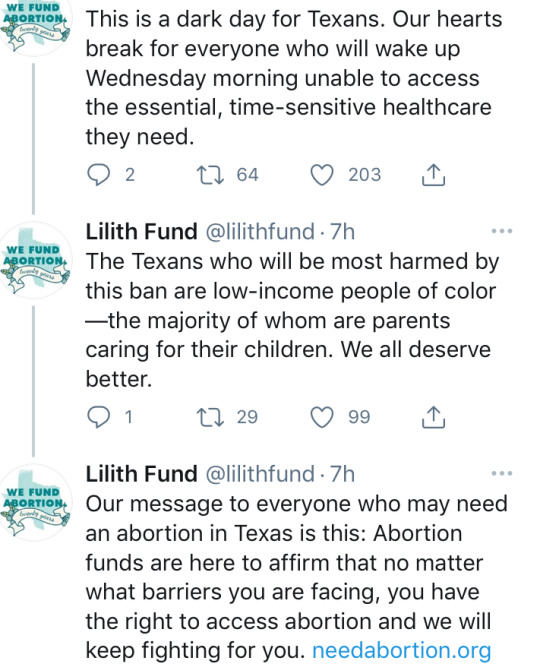
___
Re: SB 8:
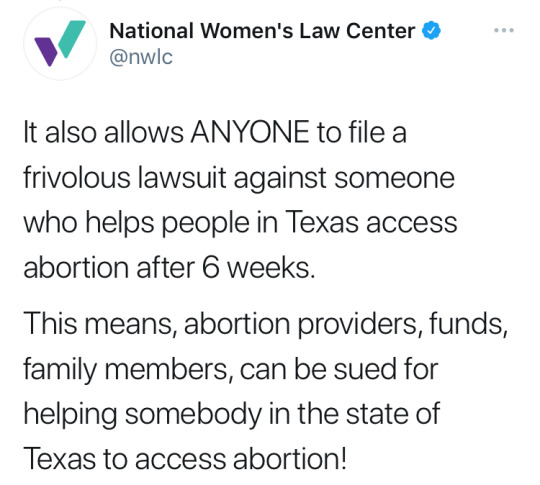
___

___
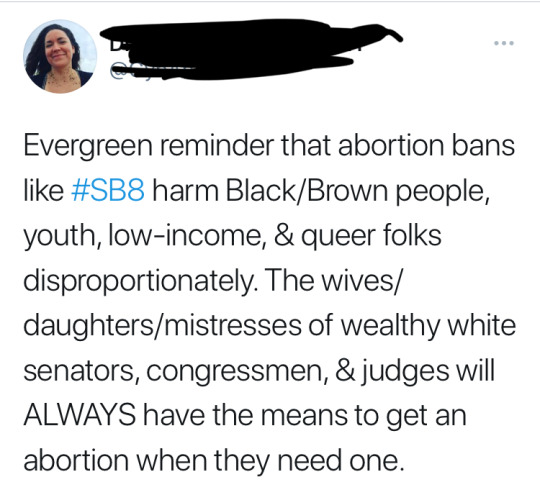
___
So what can you do? Here are some organizations and abortion funds on the ground in Texas you can support:
The Afiya Center (Dallas, TX; advocacy organization dedicated to transforming the lives of Black Women and Girls through Reproductive Justice)
Avow
Bridge Collective (Austin, TX)
Buckle Bunnies Fund
Clinic Access Support Network (Houston, TX)
Frontera Fund (Rio Grande Valley)
Fund Texas Choice
Jane’s Due Process
Lilith Fund
Texas Equal Access Fund
West Fund (West Texas)
Whole Women’s Health Alliance
Whole Women’s Health
You can also support funds in neighboring states which will likely become vital in helping Texas residents access care:
Cobalt Fund (Colorado)
Indigenous Women Rising (New Mexico)
Mariposa Fund (New Mexico)
New Mexico Religious Coalition for Reproductive Choice
Reproductive Equality Fund of the Boulder Valley Women’s Health Center (Colorado)
To learn more about SB8, you can sign up for this virtual event on Thursday, September 9th from 12 - 1:30pm CST hosted by the Texas Equal Access Fund, the Lilith Fund and the Lawyering Project:
https://secure.everyaction.com/ajAOV1gyPk6t4kdOIMJ5vA2?emci=1486cf78-e70a-ec11-981f-501ac57ba3ed&emdi=a388d5ec-e70a-ec11-981f-501ac57ba3ed&ceid=10801602
For those living in states outside of Texas, you can also check to see what, if any, reproductive rights-related legislature may be in the works in your home state and also contact your local state representative/senator to make your stance on the issue known.
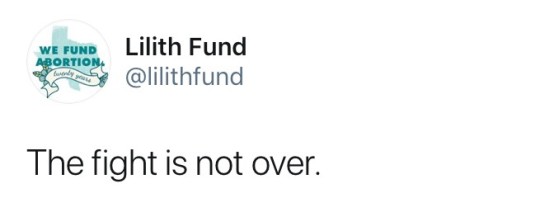
9 notes
·
View notes
Text
Throughlines from Baikal: Reflecting on the 20th Anniversary of Wellesley-in-Baikal by Allaire Diamond ’01
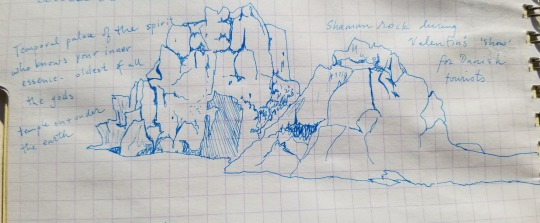
In early August 2001, I set down my bag in a simple dormitory in the village of Bol’shie Koty on the coast of Siberia’s Lake Baikal. “We each get a bed, cupboard, and closet space, and there’s a cool Russian stove. Our room overlooks the lake!” I enthused in my journal. Bol’shie Koty, whose 150 summer residents dwindle to only 80 in the deep Siberian winter, is, like many communities along the nearly 400-mile-long lake, accessible only by boat. The crescent-shaped lake is the world’s deepest (over a mile), the world’s oldest (at least 25 million years), and holds the most water of any lake (around 22% of the planet’s fresh surface water). Unique as well as superlative, Baikal hosts hundreds, if not thousands of animal species found nowhere else on earth, including sponges, fish, amphipods, and a freshwater seal. In remote southern Siberia, its watershed drains vast expanses of Mongolian steppe and Russian taiga, and the lake holds a somewhat mythical place in Russian culture. As part of the inaugural expedition of the Wellesley-Baikal program, which paired a spring course on Baikal history, literature, and ecology with summer study at the edge of the lake, I had rejoined my classmates after graduating from Wellesley and spending a summer in my home state of Vermont.
Over three weeks we explored the lake and its surrounding towns and forests, taking water samples and plant inventories and meeting local scientists, artists, land managers and even a shaman with a double thumbnail. On that gravelly shoreline, while also at the figurative shore where college meets adulthood, I was enchanted by the ways this place burst with both novelty and familiarity, and I immersed myself in observation to make connections between them.
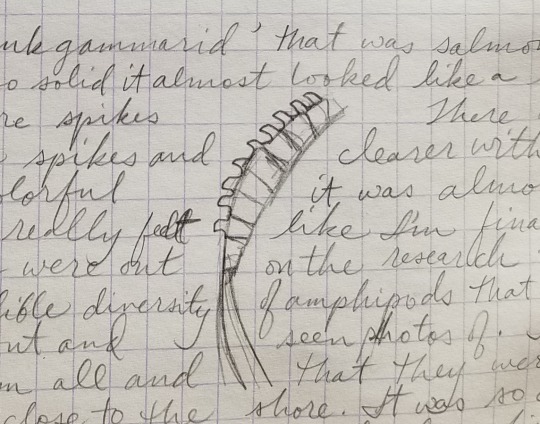
On our misty boat ride to Bol’shie Koty, I saw eerie expanses of ghostly, bare tree trunks near the head of the Angara River, the bare, pointy stems resulting from an intense local outbreak of Siberian silk moth caterpillars. I was fresh from a field technician job counting invasive insects and inventorying disease in white pine stands for the Vermont Department of Forests, Parks, and Recreation, and diligently took photos for my boss back home.
A few days after, I observed a female Siberian silk moth, “a beautiful creamy shimmery color with delicate folds,” alight on our boat in the lake, whose water looked “almost glacial in its deep blue green, slightly milky texture.” As I watched from where my classmates and I were taking samples, “one moth took off from our boat and flew valiantly toward shore, only to come closer and closer to the water until finally landing, becoming a creamy speck on the blue-green Baikal waters.” Later, I felt an odd surge of recognition - as well as horror - when one of us turned back a bedspread (“of a smooth cotton and muted brown/blue/purple/pale pink weave”) to find the grayish, fibrous lump of a silk moth cocoon. The caterpillars of Dendrolimus superans sibiricus defoliate Siberia’s characteristic coniferous forests, devouring needles of tamarack, pine, spruce, and fir.
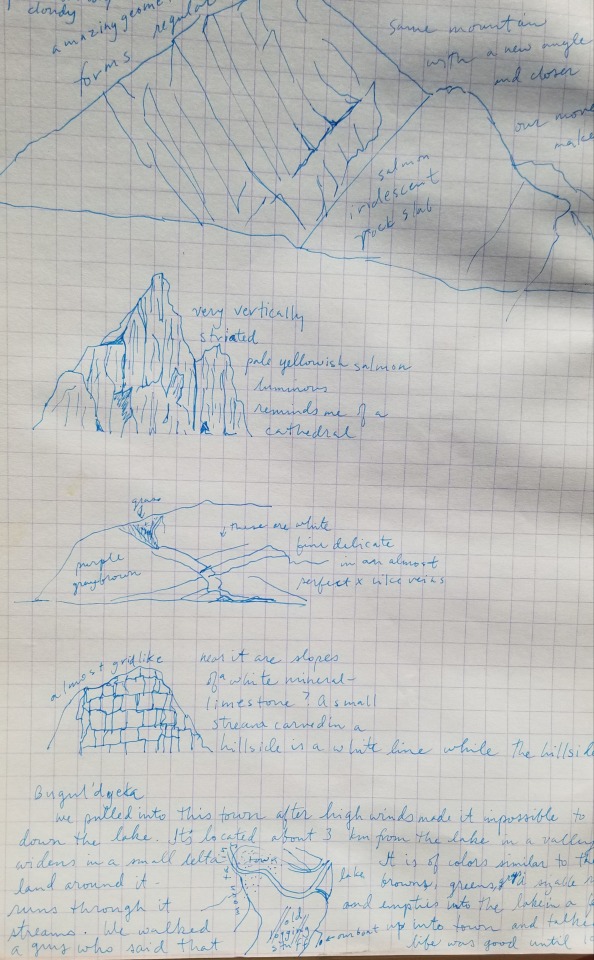
Twenty years later, I’m back in Vermont, reading these somewhat overwrought - and repetitive! - words of my younger self while the larvae of Lymantria dispar (their common name, ‘gypsy moth’, is a derogatory ethnic slur) devastate trees around me during one of the worst outbreaks in Vermont in 30 years. Lymantria dispar larvae, like their distant Siberian cousins, feed on trees that distinguish Vermont’s forested landscape, though they defoliate oaks and other hardwood trees rather than the needle-leaved conifers that the Siberian caterpillars eat. I work as an ecologist and spend much of my time on projects that protect another huge lake, Lake Champlain, and its watersheds. I still love Russian literature, saunas, and dill, my appreciation for all of which sharpened during my time at Baikal. The world changed forever just three weeks after we returned from the far side of it that year. Yet in my own life, throughlines from those days along the crumbling shoreline continue to surface and reverberate in the present. Like the fine threads of a Siberian silk moth cocoon, these connect my past and present selves, shaping and in turn being shaped by perspectives and decisions that continue to unfold.
I couldn’t have articulated it at the time, but on rereading my excruciatingly detailed journal, I can see that this trip to Russia was the first time that I, at age 21, saw myself as a witness to and participant in the churning path of history, rather than merely a visitor to museums and ruins clearly separating past and present. Opposing truths can exist at the same time, the past continually bumps up against the present, and these moments and impressions form part of an unfolding and messy whole.
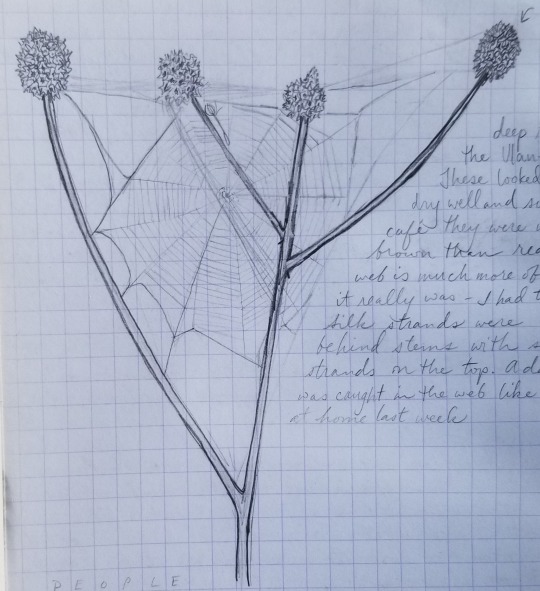
I marveled at juxtapositions. The beauty of the silk moths and the devastation of the forests in their wake. Wild-looking river deltas along the lake, thick with larch and cobble, that were in fact just decades out from the ecological and human devastation of slave-powered gold mining and deforestation. The expanse of lake viewed from an old rayon factory in Baikalsk, where I pondered a failed Soviet scheme to make airplane tires from wood pulp. A wolf wandered the shoreline and lynx pelts adorned the walls of a village home. Cows wandered the lanes and wooded margins of Bol’shie Koty, while rough fences kept livestock out of yards instead of in pastures, where they would have been in my familiar Vermont. Yet this surprising settlement pattern recalled early New England villages modeled after those in England, where overgrazing of common areas inspired the ecological and economic concept of the ‘tragedy of the commons’ in the mid-nineteenth century.
In Russia I saw academic concepts like this embodied in the land and lives around me, and the contrasts activated my thinking. Primed by the wide-ranging spring course with Tom Hodge and Marianne Moore, big thinkers with endlessly curious minds, I filled my journal with lists of plants, records of weather, notes from lectures and questions to consider.

One day our group got to witness the value of a long-term journal first hand. Talking with biologist Lyubov Izmesteva, in her dusty lab, we learned that her grandfather, Mikhail Kozhov, had begun recording ecological data on the lake in 1945, offshore from Bol’shie Koty. He passed the pen to his daughter and now granddaughter, and their collective decades of observation yielded a unique record of the lake’s health. Marianne Moore recognized the value of this careful record in 2001 and has shared it more broadly in the years since that trip. Reaching through and beyond the Soviet era, this family project is now helping the rest of the world understand how climate change is impacting Baikal.
Though I lacked a deep grounding in Russian political history, I felt a momentum in Russia, which seemed like it was still actively turning a corner from the drudgery and oppression of the Soviet era toward the complexities of democracy and capitalism. I knew the forested hills, river valleys, and watery depths around me held painful histories, like the cut-short lives of “uncounted, unregistered hundreds [of political hostages], unidentified even by a roll call” deliberately drowned in Baikal around 1920 as part of Russia’s post-revolutionary, pre-Stalinist horrors, and described by Aleksandr Solzhenitsyn in The Gulag Archipelago. In Moscow in 2001, I snapped a photo of a billboard advertising chewing gum, looming over a Soviet-era statue. The frivolity of the gum, its promise of a tiny personal diversion, seemed to contrast in a fascinating way with the stern Communist officer on his horse, frozen in metal.

In Moscow, I wrote, “Miles & miles from the city center are 6-lane streets, long apartment buildings, stores (many for furniture/home furnishings), people strolling, hurrying or waiting, painting, digging, talking, rolling out sod, carrying wallpaper, buying clothes, selling watermelons, riding bikes, doing exercises, kissing”. The pendulum seemed to be swinging toward growth and expansion. Yet other pieces just hadn’t caught up yet. I remember a car pulling another car on a busy city street with only a thick piece of rough twine, goldenrods and tall grasses adding a surprising wildness to the edges of city sidewalks, the shopkeeper in Bol’shie Koty calculating change with an abacus. I observed these dynamics with curiosity and delight.
In 2021, Baikal is an Instagram backdrop and Russia, presided over by a former KGB officer, a shaky mix of democracy and authoritarianism. I haven’t been back, but I wonder if the residents of that busy Moscow street still feel the forward-looking momentum I observed. Are they still carrying wallpaper and rolling out sod, shaping their spaces? As influencers filter images for fantastic effect and shadows of the Soviet era continue to loom, I can’t find the photos I took with film on that trip, or the paper (the last of my college career) that I wrote by hand on the porch at Bol’shie Koty. I still keep methodical notes about land for my job, but my personal journal these days contains mostly scattered thoughts on parenting, relationships, and career, quotes from podcasts, and conceptual brainstorms. I write in it to get ideas out of my head and process the complex dynamics of life, not to record anything for posterity. But in reflecting on Baikal two decades later, I realize my younger self gave me a gift in the form of her obsessively detailed notebook. She helped me decipher the throughlines that connect me to her, through a trip we both took to the other side of the world. My work now is to figure out how to pay this gift forward, to whatever selves come next.
#Allaire Diamond#class of 2001#Wellesley#Wellesley College#Wellesley Underground#Baikal#Lake Baikal#Siberia#Russia#science#moths#experiential learning#August#summer#drawings#nature#wild lu#Bol’shie Koty#Wellesley in the world
7 notes
·
View notes
Text
Juneteenth is Upon Us - Support HBCUs & Black Women-Focused Organizations!
Juneteenth is nearly upon us and WU encourages all of our fellow non-Black alums to truly think about what the day means to our Black siblings. Further, it is important for allies and accomplices to keep the perspective that, while some may feel it important that Juneteenth be recognized as a national holiday, there is the very real possibility that the day could become commercialized or whitewashed in a way that is not beneficial to the Black community. And that while the day may be formally recognized, voting rights in states where there are significant black populations are being stripped away, abortion rights are being threatened, police brutality is still a thing and there is an ongoing discussion (war) on Critical Race Theory in US public schools and institutions.
While you contemplate that, WU also encourages you to financially support, if possible, organizations focused on Black women as well as Historically Black Colleges and Universities (HBCUs). Donating to Wellesley is great but HBCUs in particular often have much smaller endowments and resource pools than PWIs (and sometimes are deprived of money that is rightfully owed to them). We have put together a list of organizations and HBCUs for you to consider supporting on this Juneteenth:
ORGANIZATIONS
Black Mamas Bailout
Black Mamas Matter Alliance
SisterSong Women of Color Reproductive Justice Collective
Brown Girls Do Ballet
The Loveland Foundation
Black Women’s Health Imperative
National Black Women’s Justice Institute
Black Girls Code
Black Alliance for Just Immigration (BAJI)
Southerners on New Ground (SONG)
Beacon Hill Black Alliance
The Foundation for Black Women’s Wellness
The Black Women’s Agenda
Black Women’s Blueprint
Black Girls Smile
Marsha P. Johnson Institute
HBCUs
The HBCU Foundation
The United Negro College Fund
Alabama A&M (Alabama)
Alcorn State University (Mississippi)
Bennett College (women’s college; North Carolina)
Bowie State University (Maryland)
Clark Atlanta University (Georgia)
Dillard University (Louisiana)
Fisk University (Tennessee)
Florida A&M (Florida)
Grambling State University (Louisiana)
Hampton University (Virginia)
Howard University (Washington, DC)
Jackson State University (Mississippi)
Kentucky State University (Kentucky)
Langston University (Oklahoma)
Lincoln University (Pennsylvania)
Meharry Medical College (Tennessee)
Mississippi Valley State University (Mississippi)
Morgan State University (Maryland)
Morehouse College (Georgia)
Norfolk State University (Virginia)
North Carolina A&T State University (North Carolina)
Prairie View A&M (Texas)
Savannah State University (Georgia)
Southern University (Louisiana)
South Carolina State University (South Carolina)
Spelman College (Georgia)
Tennessee State University (Tennessee)
Tuskegee University (Alabama)
Virginia State University (Virginia)
West Virginia State University (West Virginia)
Xavier University of Louisiana (Louisiana)
____
If museums and/or cultural organizations are more of interest, see this list of Black/African American institutions we put together last year.
____
Cleo Hereford ‘09
3 notes
·
View notes
Text
Wellesley in Politics: Interview with Marion Johnson ‘09 (@mariontjohnson), Candidate for Durham City Council
Interview by Cleo Hereford ‘09
Wellesley Underground loves seeing our sibs involved in the political process at all levels but particularly the local, municipal level where substantial change can be affected. In North Carolina, one of our sibs has joined the race for Durham City Council in Ward 1. A 2009 Wellesley graduate, Marion Johnson also received a degree in Public Policy from Duke University in 2014. After time spent in Washington, DC, Johnson returned to North Carolina, where she grew up, and currently works for Frontline Solutions, a black-owned consulting firm that “serves the philanthropic and nonprofit sectors.”
We caught up with Marion to find out more about her run for City Council.
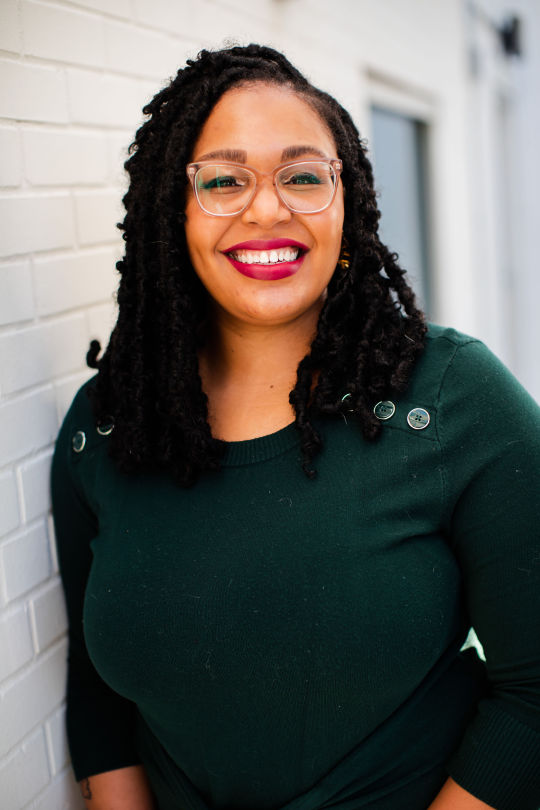
Thanks for chatting with WU, Marion! You grew up in North Carolina, and you’re now running for Durham City Council. Why run for the City Council and why this year?
Thanks so much for having me! I’m a big fan of y’all. I’ve worked on a few Durham City Council campaigns, and running for office has been something I’ve been strongly considering doing for several years. I planned to take 2020 off from all political work so that I could really think through whether now was the time. Obviously, 2020 did not turn out to be a relaxing year at all! But it did become a very clarifying year. Durham was already facing a housing crisis and an economic crisis, and when COVID-19 hit, it just magnified those crises for our most vulnerable neighbors. So that clarified for me that we need as many leaders as possible who are committed to making progressive choices for Durham, to make this city as accessible, affordable, and livable as possible. And now was the right time.
Tell us a little bit about Durham and what you love most about the city.
Durham is hands down my favorite place I’ve ever lived. I came here to get my masters’ degree in public policy, and fell in love with this city that has the strongest commitment to community organizing and local advocacy I have ever seen. Durham is just as passionate about social justice as it is about food, so I’ve definitely found my people.
After attending Wellesley and then living in Washington, DC, you returned home to North Carolina. How did your time away change your perspective on your home state?
I didn’t expect to miss North Carolina so much! My plan when I went to college was to move to Washington and get involved in federal or international policy. I had that typical adolescent need to get out and do something prestigious. But actually working at the federal level taught me how slowly that work typically moves. Things move so much faster at the local level, and you see the tangible impact on people’s day-to-day lives so clearly. So I think my priorities shifting from prestige to purpose made me see North Carolina differently, and moving to Durham specifically sealed the deal for me.
The general theme of your campaign’s platform seems to be ‘justice:’ housing justice, environmental justice, accessibility justice among others. Why is that specifically the focus of your campaign?
People have been talking for a long time about the difference between equality and equity. I think we as a society are (or at least need to be) at the point where we stop talking about that distinction because it isn’t moving us forward anymore. We need to be talking about justice, and about liberation. So justice feels like the right grounding for the moment and movement we’re in.

Under Social Justice, you call for a commitment from the City Council to be “explicitly anti-racist, not just non-racist.” We’ve heard a lot about this distinction particularly in the last year. In terms of municipal governance, how can city governments be more intentionally anti-racist especially in a city like Durham where about 40% of residents are Black?
To me, anti-racism is about actively dismantling the status quo, which upholds white-centered power structures; and building new structures and systems that center communities of color. In a city like Durham, Black people are disproportionately hurt by a status quo that keeps displacing, criminalizing, and ignoring long-standing communities. So we have to explicitly commit to redressing harm, and not hide behind race-neutral language. We need to focus the kind of attention that typically goes to white communities, especially wealthy ones, on our communities. Even things as seemingly mundane as sidewalk repair or lead paint removal should prioritize majority Black and brown neighborhoods.
Speaking of the last year, it’s been eventful to say the least. First, how are you and second, what did you come away with after 2020 in thinking about things like advocacy and service (Non Ministrari sed Ministrare)?
Thanks for asking! Overall, I’m doing well. The pandemic really magnified my existing mental health issues - I have anxiety, depression, and OCD, and all of my typical coping mechanisms got shattered by the quarantine. I lost a Wellesley sister to COVID-19. My dad, who lives in Nigeria, contracted it as well. I haven’t hugged my mother, who also lives in Nigeria, since 2019. But I also have the privilege of full-time employment, at a job that values our mental health. I have the privilege of a happy marriage to a woman who doesn’t make me feel unsafe in my own home. I was able to quarantine at home without significant disruption to my life, and I have health insurance. So I feel more responsible than ever to fight for a world where more people have the kind of baseline stability that I do, frankly. That world is not just possible, it’s critical. Because people are dying for the lack of it.
Lastly, at WU we’re all for fighting the good fight but we’re also big proponents of self-care (and napping) so we also have to ask how are you caring for yourself these days?
I have really doubled down on being a plant lady. I have so many houseplants now, and also have an ever-growing garden in our backyard. Tending to plants and growing food is very restorative. I also play The Sims 4, which is where I create the world I want to see in real life. My Sims world has numerous unions, assertive green policies, and well-designed (not to brag) affordable housing. So when I need to blow off steam, I’m likely heading to my garden or my Sims.
____
For more information on Marion’s campaign, check out her website: https://www.mariontjohnson.com/
2 notes
·
View notes
Text
WU Reviews: The Me You Can’t See (written by Cleo Hereford ‘09, @cleoc87)
As someone who has followed the Duke and Duchess of Sussex’s ups and downs over the last few years, I naturally activated a 7-day Apple TV trial in order to watch Prince Harry and Oprah’s 6-part series The Me You Can’t See. After watching the trailer, I thought the series would be emotional but perhaps wasn’t fully prepared for the full weight of the experience that was to come.
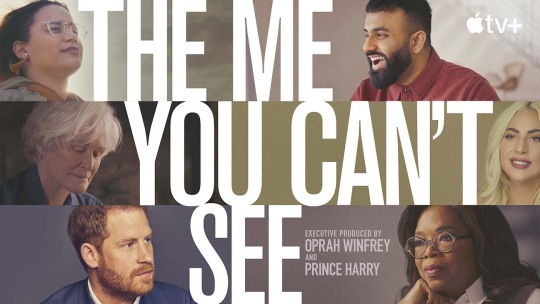
I watched the first episode that featured Lady Gaga and Chopped winner Rashad Armstead among others and quickly realized that this was not a binge-able series (at least not for me). Over the course of the series, viewers are introduced to mental health experts but also the stories of real life people globally who have experienced mental health struggles.
Boxer Ginny Fuchs who struggles with Obsessive Compulsive Disorder.
Syrian refugee Fawzi currently living in a refugee camp in Greece and grappling with trauma in the wake of his brother’s violent war-related death.
Ambar who was diagnosed with schizophrenia after the death of her father.
Glenn Close’s sister, Jessie, who was diagnosed with bipolar I disorder.
The best thing about the series was not only the range of different stories and diagnoses but also the way in which those in various stages of healing are depicted throughout the series. Some like Lady Gaga (referred to by Stefani in the series) have found a set of supports and treatments that work for them while others like Rashad had just started the process of healing at the time of filming. My favorite part of the series was the discussion of the Zimbabwe-based Friendship Bench. The Friendship Bench model utilizes members of the community, many being grandmothers or maternal figures, training them to provide a supportive ear on a bench located in the community for those unable to access more formal treatment options. Discussion of this model served as the basis for further conversation about global mental health access particularly in rural or under resourced countries as well as how existing community resources can be used in order to address mental health issues and build connections for people who may feel isolated or disconnected.
‘Enjoyed’ is probably not the right word to describe my reaction after finishing the series over the course of a week (again breaks definitely required). Having experienced my own challenges with depression, anxiety and trauma some episodes were especially hard to get through and at times required either a yoga session or for me to watch something light and/or mindless (The Parkers, for example). I will say, however, that I was profoundly affected by the series. It was comforting, for lack of a better word, to see people in the healing process working through their issues whether through treatment or building community or spending time with family but more importantly, owning their mental illnesses not as their identities but more so as a part of their lives that they fully acknowledge they must contend with. For those who may be wondering or hesitant, this was not the Oprah and Harry show though they did share their own experiences with mental health in a way that felt like additional narratives among others being told.
If you’re interested in behavioral health access or simply open conversations about mental illness, The Me You Can’t See is a worthwhile and, in my opinion, a must see series.
Trigger warnings for discussions of: child loss; death; eating disorders; OCD; schizophrenia; sexual assault; substance abuse; suicide/suicidal ideation; unwanted pregnancy; war-related death
2 notes
·
View notes
Text
How To Call Out Your White Yoga Studio/Teacher For Not Saying Shit About the Global and State Sanctioned Murder of People in India by Shelly Anand ‘08 (@maanandshelly)
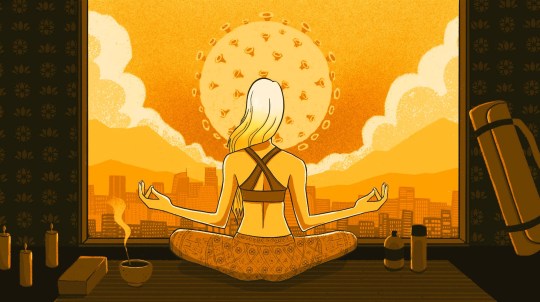
(image by Susan Haejin Lee for NBC News, from this amazing article about how South Asian women are taking over from yt lady appropriators!)
Dear [Insert Name of Yoga Teacher/Studio],
Yoga as you know has its roots in India. American culture has greatly benefitted from these ancient practices including not just yoga but ayurveda and Hinduism, Sikhism, Buddhism, Sufi Islam generally.
I hope that practitioners and monetary beneficiaries of yoga practices, particularly those who are not of South Asian descent, take the time to call for global support of the Indian people who are dying by the thousands daily-- [insert personal anecdote about your own family impacted and/or some statistics from an article. Yell at them about how angry you are regarding third world tropes that India is overpopulated and poor and this was bound to happen. Tell them how this is reminiscent of American Foundations sending money to support population control programs during the Emergency under Indira Gandhi.)
I hope to see something from [you/name of Yoga studio] soon.
Sincerely,
[Your Name]
note from the author: i actually did send this email out.
2 notes
·
View notes
Text
#IndiaCovidCrisis
For those who haven’t been following, India is currently overrun by the Coronavirus with upwards of 300,000 new infections being reported daily. The country lacks sufficient vaccine access for its citizens and is running out of hospital beds, oxygen and medication.
Wellesley Underground stands in support of all of our Indian siblings, both those residing in India now as well as those with family members in the country. While many in the US and other Western countries are hyper focused on “getting back to normal,” it is clear that there is, yet again, two realities for many of us as it relates to issues of inequity, equitable access to healthcare and oppression.
If you wish to support ongoing COVID efforts in India, we have put together a list of resources and suggested places to financially support if you are able:
Ongoing Fundraisers Related to COVID-19 Distress
Twitter Thread of ways to help/funds/etc. (@MythiliSK)
India is Facing a COVID Crisis (Equality Labs; includes resource list)
#SponsorAGirl (Myna Mahila Foundation)
Hemkunt Foundation
KhalsaAid
GiveIndia
Feeding From Far
CARE - India COVID-19 Emergency
COVID Relief Donation Form + Suggestions (@IndiraDammu)
Mission Oxygen
South Asian Student Fundraiser (GiveIndia)
2 notes
·
View notes